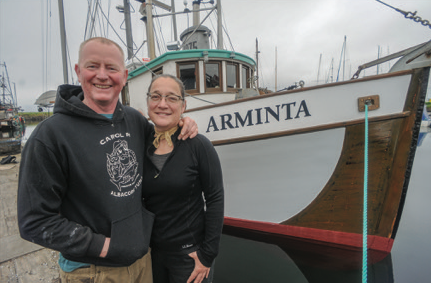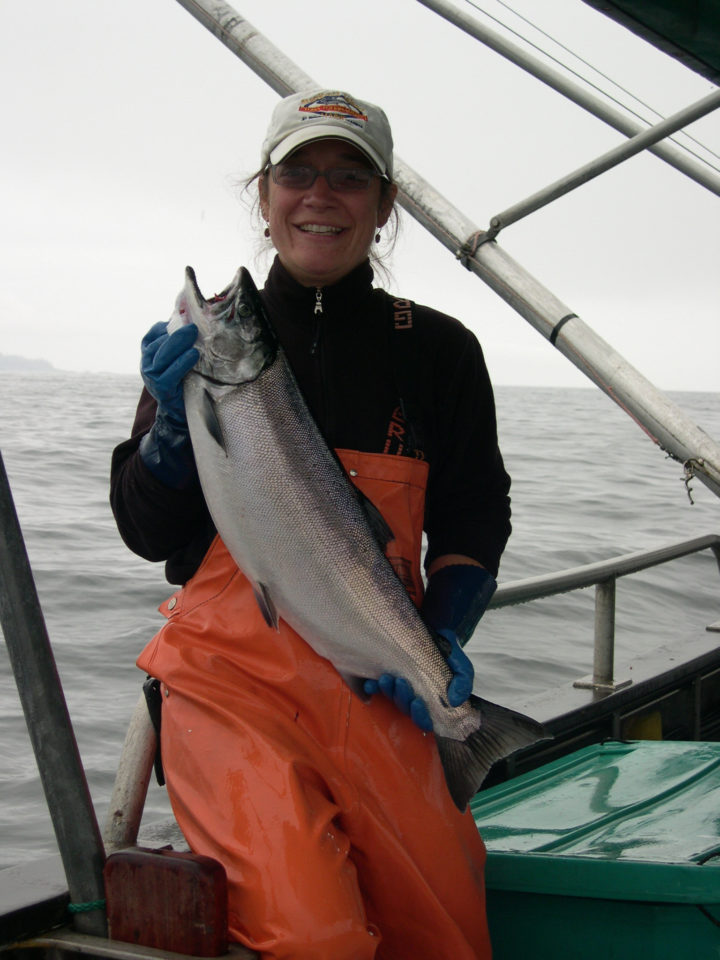Working with Fishermen for a Changing Ocean
Published by Ocean Conservancy
Amy Grondin is a commercial salmon fisherman based out of Port Townsend, WA. When not fishing on F/V Arminta she works in commercial fisheries outreach and sustainable seafood consulting.
The research and data provided by the National Atmospheric and Oceanic Administration (NOAA) are crucial to my livelihood as a commercial fisherman. Further, partnerships between fishermen and NOAA to better understand serious marine issues like ocean acidification are helping to build trust and collaboration between those who making their living on the water and those who study and manage our ocean resources.


In the Pacific Northwest, we’re proud of our deep connection to the ocean and our natural resources. I first felt this connection within my home state of Maine. Like many other Mainers, I grew up in an outdoor family that understood the importance of respecting nature, water (be it the lake I grew up on or the ocean) and what both provided. When I moved to the West Coast and began commercial fishing more than 20 years ago, I brought with me an appreciation for the importance of protecting the environment that supports the outdoor life I love. It’s the same appreciation I carry today on F/V Arminta, the fishing boat I co-own with my husband Greg. I may catch fish for a living, but I’m an environmentalist at my core. When I am not fishing I work hard to give back to the oceans that provide us with a living and do what I can to help salmon.
That’s why eight years ago I became troubled when shellfish growers in the Pacific Northwest raised the alarm over the loss of millions of oyster larvae in hatcheries. After the culprit was identified as the very sea water that was being pumped into the hatcheries, seawater affected by ocean acidification (OA), I knew that it was a matter of time before other parts of the marine ecosystem—like the fish I catch—would feel the impacts as well. Flash forward to today—Washington is experiencing some of the worst acidification effects in the world. While we know for sure that OA is impacting growth and survival of oysters and other shellfish, we are just starting to document these challenges in finfish, like salmon. As stakeholders whose livelihoods depend on the health of marine resources in the Pacific Northwest, it is imperative that fishermen stay aware of ocean issues and be involved in discussion as we seek for solutions.


NOAA has been instrumental in OA research in part by listening to Pacific shellfish growers and fishermen and hearing their stories. NOAA’s research has helped us to understand ocean acidification and how it is impacting the marine food web from the smallest plankton to top predators. Successful fishermen know their target fish’s behavior, and research on salmon from NOAA’s Northwest Fisheries Science Center is helping provide answers to how OA affects fishes’ sensory systems that play a role in everything from how fish travel to how they find their prey and keep from becoming prey themselves. Likewise, work coming out of the Pacific Marine Environmental Lab (PMEL), one of NOAA’s programs in Seattle, unpacks the complex chemistry of our oceans and brings to light OA’s impacts on all that is swimming, drifting and growing in the ocean. This information is especially important to understand as fishermen, managers, researchers and others work to set fishing seasons that are sustainable for both the ocean and the fishing communities that make a living from the sea.
Once the fishing seasons are set and we are on the water working, it’s the daily weather and ocean data that NOAA provides that go to sea with us on our boats. NOAA is one of the partners of the US Integrated Ocean Observing System (IOOS), a collection of ocean buoys, satellites, sensors and experts that acts as our eyes on the ocean. The Northwest Association of Networked Ocean Observing Systems (NANOOS) provides fishermen in Washington and throughout the region with trusted information they need to do their jobs safely and efficiently. A good fisherman is a safe fisherman and a safe fisherman pays attention to the weather. Along with NOAA’s National Weather Service, NANOOS helps us to do that—stay safe.
NOAA serves a vital role as information purveyor. The agency’s easily accessible data and issue expertise make for more informed fishermen, and more informed fishermen make for stronger fisheries. But this exchange also lays the foundation for future collaboration within other fishery discussions through continued listening and communication. The services provided by NOAA are invaluable and, as a fisherman, I’m grateful for the resources and support provided by its offices and programs.
Sign up for our emails!
The post Working with Fishermen for a Changing Ocean appeared first on Ocean Conservancy.
Read the full article at: https://oceanconservancy.org/blog/2019/01/18/working-fishermen-changing-ocean/


